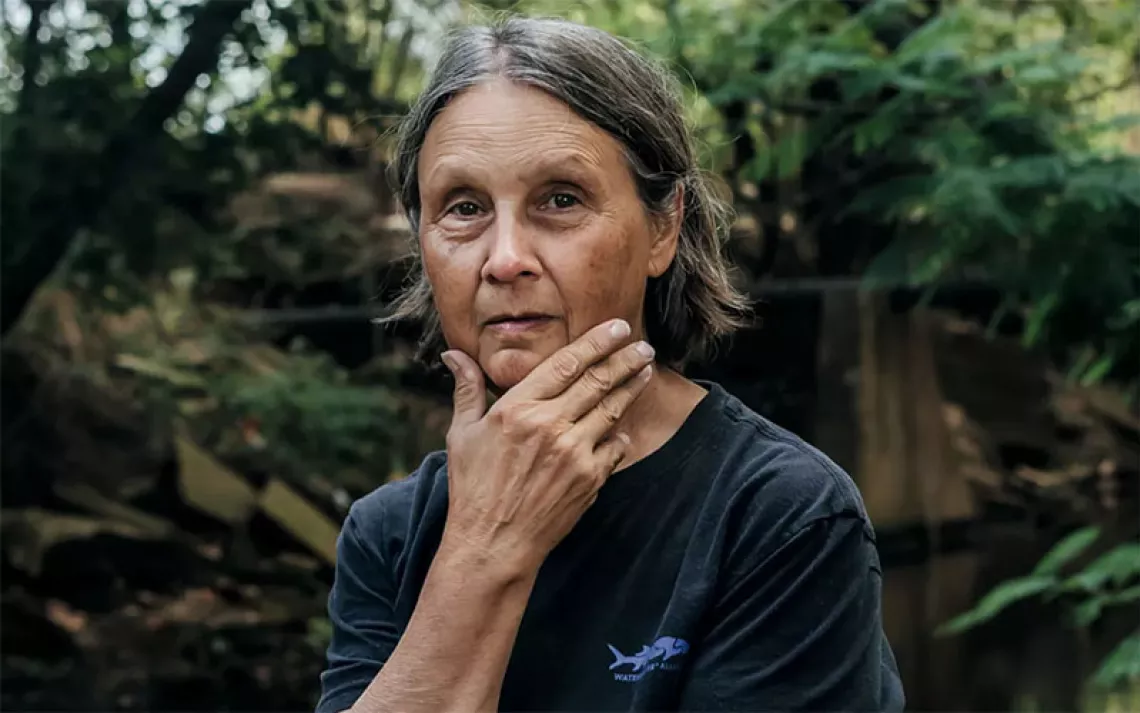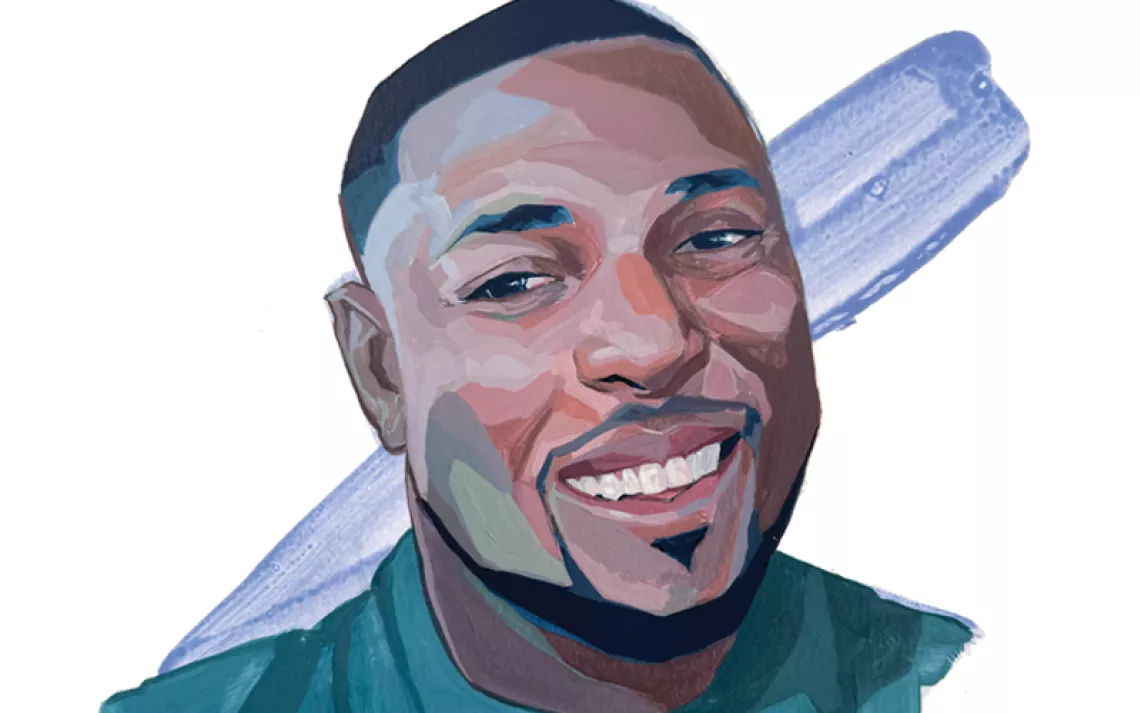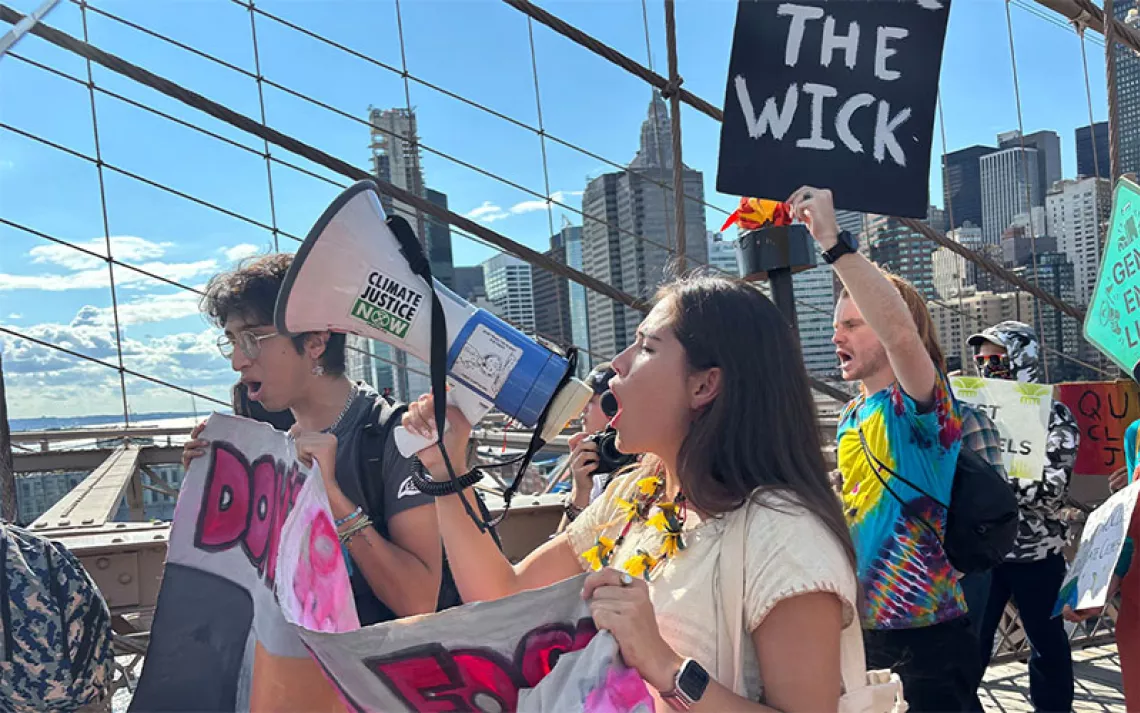Has the Internet Changed Activism?
Zeynep Tufekci talks activism, Facebook, and how big movements flame out fast

Photo of Zeynep Tufekci courtesy of Personal Democracy Media
It was the mid-90s and Zeynep Tufekci, a young computer programmer living in Turkey, had just figured out how to connect to the internet. She didn’t know how to search it, so she just clicked from one url to another, reading.
The internet provided access to something that Turkey did not have: uncensored news. She quickly became obsessed with the story of an indigenous uprising in Chiapas, Mexico. They were calling themselves Zapatistas, after Emiliano Zapata, the 19th-century revolutionary who broke up the massive farms and ranches owned by wealthy Mexicans and redistributed them to the peasant workers. A recent change to the Mexican constitution had opened up the possibility of transferring communally managed indigenous territory in Chiapas to private ownership, and the Zapatistas were determined to prevent that from happening.
Tufekci’s curiosity led her to travel to Chiapas in 1997, where she found no computers and no electricity. “It was a very traditional indigenous uprising,” she says. “They looked like every indigenous, land rights, health care, education, development-oriented group you ever saw.” But they had a charismatic spokesperson who was getting quotes into the New York Times and tech-savvy allies who were sending out dispatches from the internet cafes of San Cristóbal. “A lot of political ideology and hype got projected onto them,” says Tufekci. “But it did have real impacts. All of these internet-coordinated groups that helped them meant that the Mexican military was less likely to prosecute or bomb them.”
In the years since, Tufekci has become a scholar of online activism. Since the Arab Spring, the ways that activists use the internet has been subject to a lot of breathless hype, but Tufekci, who is an associate professor at the School of Information and Library Science at the University of North Carolina at Chapel Hill, takes a more pragmatic view.
She compares the internet to the Sherpas who have become an integral part of expeditions to the top of Mount Everest. The internet allows movements of like-minded people to grow dramatically and rapidly. But without the incremental challenges and disagreements that earlier movements faced before they even came close to hitting the big time, a new movement like Occupy Wall Street can find itself halfway up Mount Everest with a failing oxygen tank.
In Tufekci’s new book, Twitter and Tear Gas: The Power and Fragility of Networked Protest, she narrates a perfect example of this: an excruciating moment when congressman and civil rights hero John Lewis stops by Occupy Atlanta after some protesters invited him there, hoping to broaden Occupy beyond its mostly white membership. Lewis offers to make a speech to the group, but a young white philosophy student hijacks Occupy’s hazily defined consensus-based decision-making process and argues that it’s wrong to invite Lewis to speak to the assembled, because it would create the impression that Lewis is better than everyone else, when in fact all humans are equal.
Lewis leaves without giving a speech. Being a class act, he says later that he understood the process, and that when he led the Student Nonviolent Coordinating Committee (SNCC), its members had also struggled with consensus and long meetings. But the SNCC went through those struggles in a less-networked era, and long before it was in a position to reach out to powerful allies.
Using the internet as a tool to organize is also complicated by the fact that today much of that organizing happens on platforms owned by private companies like Twitter and Facebook. Tufekci describes this as somewhat like relocating a public gathering from a public square to a shopping mall—the space is less chaotic and you can reach people that you might never meet otherwise. The same rules governing public protest don’t apply in private spaces, however; there’s always the distinct possibility that a security guard will show up and kick you out.
For example, writes Tufekci, for years Facebook has blocked media related to Turkey’s Kurdish residents. Everyone from local politicians to prominent authors and fans of Kurdish music have woken up to find their Facebook accounts suspended.
The most obvious suspect was the Turkish government, which has struggled at times to admit that Kurdish people even exist. But after some digging, Tufekci discovered that the error was within Facebook itself. Algorithms written to identify posts related to the PKK, a Kurdish independence group that the U.S. State Department classifies as a terrorist organization, also flagged anything related to Kurdish culture. It was as though the media decided to ban all images of shamrocks and leprechauns during the years that the Irish Republican Army was setting off bombs in London.
The worry, then, is that the activists who have come to depend on the internet will fail to recognize and adapt to its limitations. The last decade has seen a dizzying number of grassroots movements burst into the mainstream but then fail to make any lasting political change.
Tufekci spoke with Sierra about her new book, and what technology might actually do to make social movements better.
*
Okay, so here is my very basic question: What is social media good for and what is it bad for?
It’s very good for trying to get attention and for changing the narrative. It is not as good for organizing.
Fake news is so common on the internet these days that it seems like the ability of social media to change narrative has been compromised, and Facebook is catching a lot of flack. Are you seeing signs that Facebook is moving away from news?
I don’t think Facebook is going away from news at any point. That’s what people share. I don’t think Facebook will be going away from that.
Do they have the capacity to get the fake news problem under control?
Yes. In fact their head of AI [Artificial Intelligence] said, “We can do this. We just need to be told to do this.” They can do many things—they can’t eliminate stuff, but they can do a huge amount to dampen it, if they were so motivated. They have a very complicated and sophisticated system to eliminate nudity. And they’re very good at it.
When they’re motivated, they can do it. The question is, are they motivated? It’s nothing but a loss to them. If there’s a lot of fake news and people are clicking on it, that’s really not bad for their business model. I’m not saying that they are intentionally doing things badly, but they don’t really have an incentive to do anything about it. Although the bad publicity may be motivating them now.
If you could create new technology for activists, what tech would make organizing better?
Collective decision-making. What’s missing is collective decision-making in a manner that fits the participatory sensibilities of today’s activists. We just don’t have anything like that.
A lot of tech people don’t understand what activists need. They keep doing things that they think activists need. They think they need more publicity or anti-censorship tools.
But collective decision-making is at the top of my list of things that have been missing for a long, long time. There’s still very little investment or interest in developing it. But it’s clearly the thing that needs to be because it’s holding decision-making back. Movements get frozen because they can’t move forward.
There’s Loomio. It’s a good tool, but it’s a small tool. And they can’t raise any money. Even small tools can’t get funded.
Early on in your book, you mention that activists tend to be early adopters of new technology. Do you feel like now, with all the drawbacks to Facebook and Twitter, that people are moving away and into something new?
At this moment, they are kind of stuck with where they are. As soon as something like Mastodon, which is this independent platform, comes through, they jump at trying it.
But they aren’t going to go there and leave the platform until lots of people are there. Facebook has 2 billion users now. Activists are there because other people are there, but they would be the first people to move if something shows up that seemed to be viable or attracting enough attention. It’s a double-edged thing. They’re both trying new things before other people, but they’re also stuck where people are.
I interviewed someone a while ago who said that she had noticed that in Montreal, student activists had started handing out flyers in person again, because they thought that the physical act of handing something to someone and explaining it to them was more effective than trying to organize online.
I understand that. But I think the thing that's important is not how you distribute the flyers. The distribution channels aren’t the key. The question is, are you out there meeting people? If handing out papers helps you meet people, fine, but there is no magic to handing out flyers. The tactic could be anything.
 The Magazine of The Sierra Club
The Magazine of The Sierra Club



